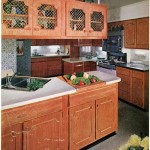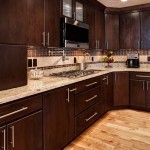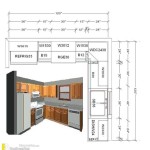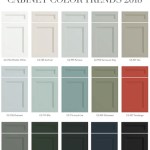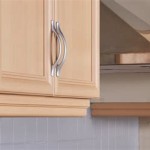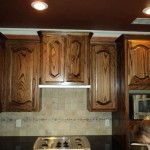Design Considerations for Kitchen Cabinets: A Comprehensive Guide
Kitchen cabinets are the cornerstone of any functional and aesthetically pleasing kitchen. They provide ample storage, enhance the overall design, and can significantly impact the usability and flow of the space. When designing kitchen cabinets, there are several key aspects to consider to ensure both functionality and a visually appealing outcome.
1. Cabinet Type and Style: Choose from various cabinet types such as framed, frameless, and inset. Each style offers unique advantages and suits different kitchen aesthetics. Consider the overall design theme of your kitchen and select a cabinet style that complements it.
2. Cabinet Layout: Plan the cabinet layout carefully to maximize storage capacity and create an ergonomic workspace. Consider the placement of major appliances, countertops, and other kitchen elements to ensure a seamless flow during cooking and cleaning.
3. Cabinet Dimensions: Determine the appropriate cabinet dimensions based on the size of your kitchen and the intended storage needs. Standard cabinet heights range from 30 to 42 inches, while depths typically vary between 12 to 24 inches. Customize the cabinet width to fit the available space.
4. Cabinet Materials: Choose cabinet materials that meet your durability, aesthetic, and budget requirements. Popular options include wood, laminate, and thermofoil. Each material offers its own unique advantages and limitations, so consider your specific needs carefully.
5. Cabinet Finishes: Select cabinet finishes that complement your kitchen's overall design and personal style. Options such as paint, stain, or veneer can enhance the visual appeal and create a cohesive look. Consider the durability and maintenance requirements of each finish before making a decision.
6. Cabinet Hardware: Cabinet hardware, such as knobs, handles, and hinges, not only adds a touch of style but also enhances the functionality of your cabinets. Choose hardware that is both aesthetically pleasing and durable, and consider the size and style of your cabinets.
7. Cabinet Organization: Maximize storage efficiency with clever organization solutions. Incorporate pull-out trays, drawers with dividers, and built-in organizers to keep your kitchen items neatly stored and easily accessible.
By considering these essential aspects, you can design kitchen cabinets that meet your specific functional and aesthetic requirements, creating a stylish and efficient space that is a joy to use for years to come.

Kitchen Wardrobe Cabinet Ideas For Your Home Designcafe

21 Creative Kitchen Cabinet Designs Design Wooden Cabinets Free

20 Top Kitchen Design Ideas That Will Inspire You Oppein

Kitchens Jane Lockhart Design

15 Stunning Kitchen Cabinet Designs In Singapore With 5 Essential Tips

Amazing Kitchen Cupboard Interior Design In Hyderabad

Creative Kitchen Cabinets For A Stylish

Make Your Kitchen Look 𝙋𝙧𝙚𝙢𝙞𝙪𝙢 With Our 3g Design Aluminum Cabinet Modern Wardrobe Cabinets

Modern Kitchen Cabinets Vs Traditional Design Eurorite

12 Stylish Kitchen Cupboard Designs Design Cafe


